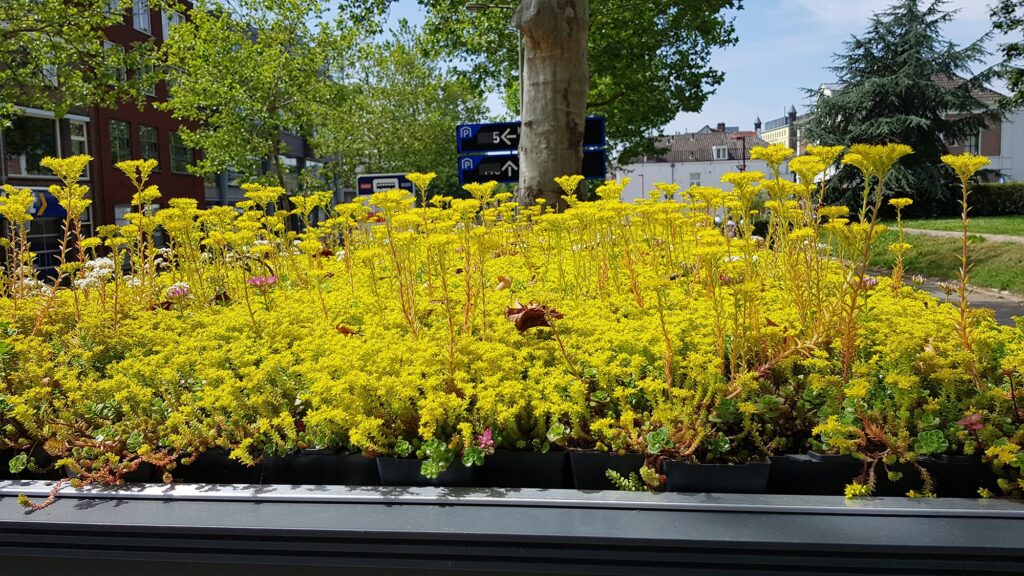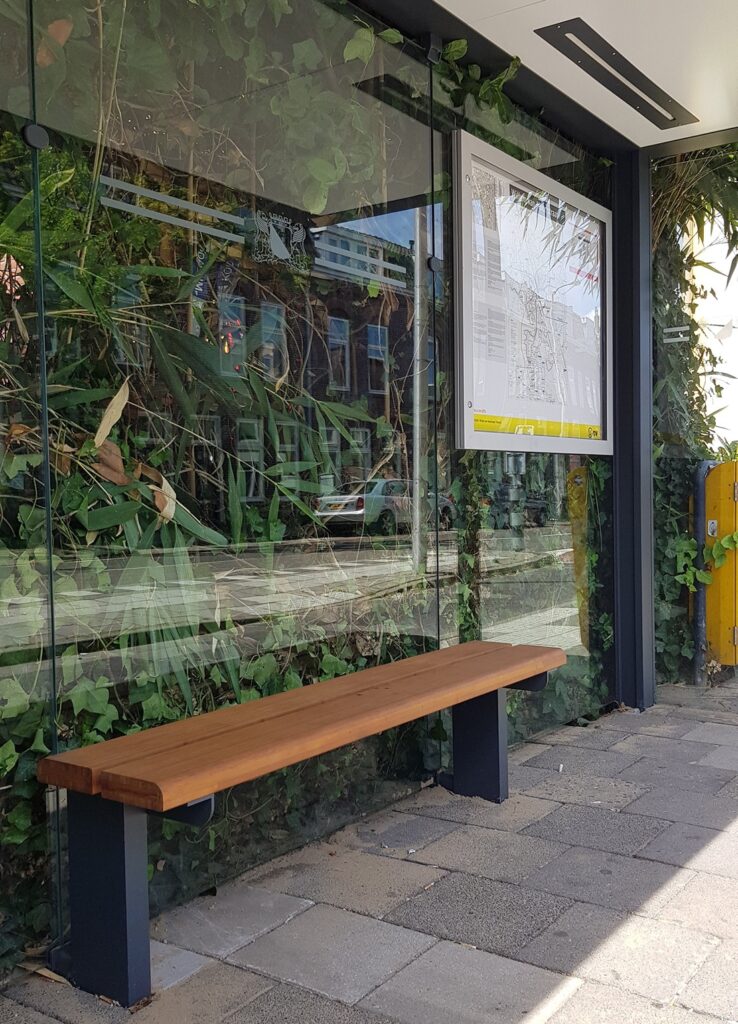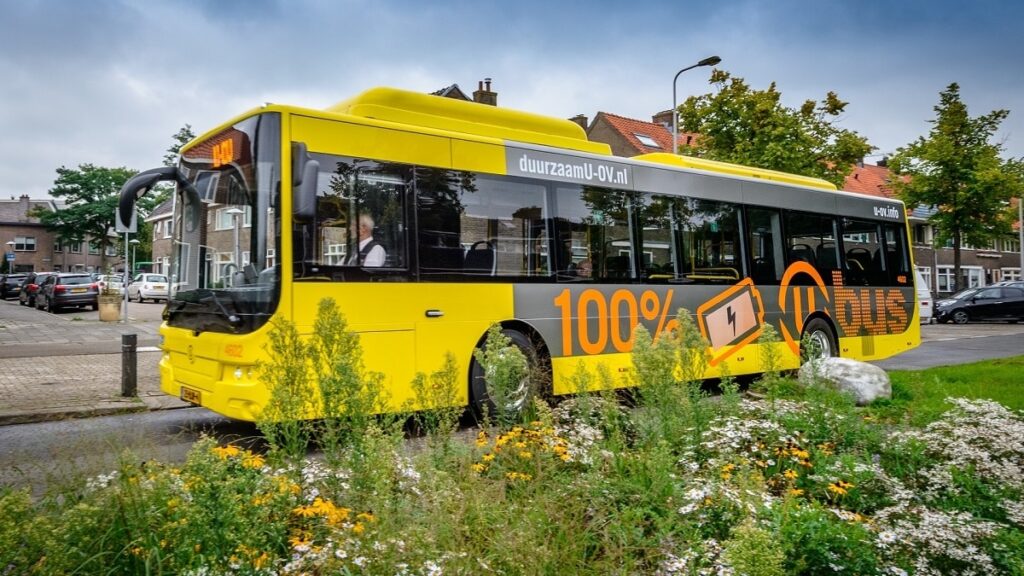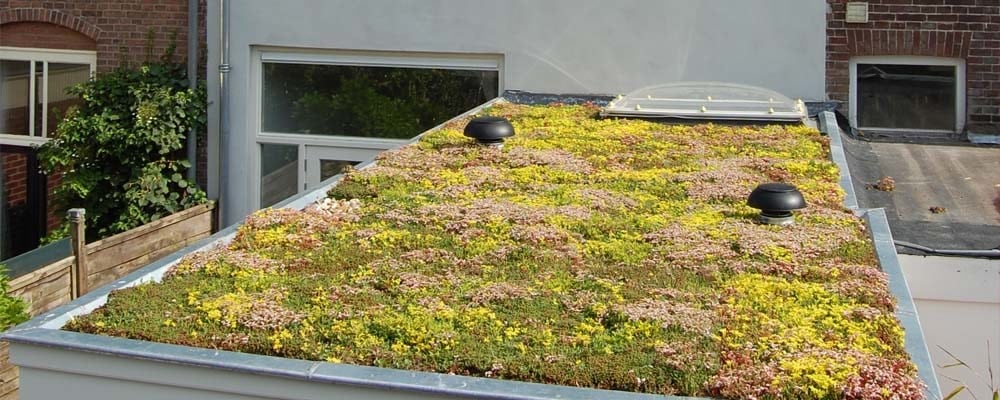

By Michiel de Gooijer
In the Dutch city Utrecht, 316 bus stops now have a green roof. They not only look great, but they also help capture fine dust, storage of rainwater and provide cooling in the summertime.
It is one of many measures that could improve Utrecht’s air quality. Did you know that after smoking, an unhealthy environment (including bad air quality) is the second cause of diseases in the Netherlands?
Watch the video at the bottom of this article.

More Biodiversity
The green roofs of Utrecht’s bus stops have also become bee stops and contribute to the city’s biodiversity, supporting insects like honey bees and bumblebees.

Sedum Plants
The roofs mainly have sedum plants. They are maintained by municipal workers who drive around in electric vehicles.

LED Lights
The bus stops are outfitted with efficient led lights and a bamboo bench.
Better Buses
Recently Utrecht has replaced 10 diesel buses for electric buses. Utrecht aims to only operate CO2-neutral buses by 2028. In the meantime, Utrecht incentivizes bus drivers to adapt to a more environmentally friendly driving style. The buses register how efficient and comfortable each bus driver operates the bus, and based on how well they drive, they can “win” prizes the cleaner, more comfortable and safer they drive.

More Electric Buses
Utrecht is expanding the number of buses powered by electricity. The electricity used by Utrecht comes from Dutch windmills.

Your Own Green Roof
The citizens of Utrecht are incentivized to transform their own roofs into green roofs too and can apply for special subsidies.
Dutch City turns bus stops into bee stopsThis Dutch city has transformed its bus 🚌 stops into bee 🐝 stops 🌼👉🏽ecowatch.com/dutch-city-bus-stops-into-bee-stopsBrightVibes
Posted by EcoWatch on Monday, July 8, 2019
And How About Bee Stings?
Speaking from personal experience, the bees are attracted by the plants and flowers on the roof, not by the people sitting underneath the roof. And as you can read here, in general bees are not aggressive at all. They are often mistaken for the more aggressive wasps, but there really is no need to fear these busy bees on these bus stop green roofs.
Reposted with permission from our media associate BrightVibes.
- 7-Mile 'Bee Corridor' of Wildflowers Will Feed London's Pollinators ...
- Minnesota Will Pay Residents to Create Bee Friendly Lawns ...
- Have Old Political Signs? Donate Them To Help Bees Stay Warm and Safe - EcoWatch

 233k
233k  41k
41k  Subscribe
Subscribe 